Window Pains
Inside the psychology of unfinished stories, binge behavior, and the next era of content discovery.
Welcome to Hub Intel. We’re here to provide data, not drama. Our goal is to help you understand the trends in the entertainment industry and what they mean to your business.
Window Pains
The café smelled of strong coffee and cigarette smoke. Outside, rain slid down the glass in rivulets. Inside, the clatter of cups and the low hum of conversation blended into a kind of urban symphony. At a corner table, Bluma Zeigarnik, a young psychologist, sat with her field notebook. She watched intently as the waiter moved effortlessly through the café. He floated from table to table, balancing trays, listening intently, never once glancing at the order pad tucked in his pocket.

At one table, two men ordered schnitzel and beer. At another, an older gentleman asked for tea with lemon. The waiter kept it all in his head. He knew who wanted extra mustard and who wanted their strudel warm. He delivered each order with perfect recall.
Then something uncanny happened. Mere minutes after settling the bill, when the transaction was complete, the waiter passed those same customers and greeted them like total strangers. All the details of those diners were inexplicably…gone from his memory. Erased. As though paying the bill had wiped the slate clean.
The Power of the Cliffhanger
This was 1927, and Zeigarnik was so fascinated by the waiter’s behavior that she returned to her lab and launched a full study. Soon, she confirmed exactly what her instincts told her that day in the café: the brain remembers unfinished tasks far more vividly than finished ones. Our minds cling to what is unresolved, holding it in memory until the loop is closed.
In Zeigarnik’s experiments, people remembered interrupted tasks nearly 90% better than completed ones. It became known as the Zeigarnik Effect, and is perhaps the most powerful secret engine of human storytelling. The effect is strongest when a task creates clear tension, when people are motivated to finish, and when the interruption is meaningful. In other words, unfinished business lingers in memory, but only if the business feels worth finishing. That’s why cliffhangers are so powerful: they’re unfinished, and they matter.
The Age of Windowing
For most of the last century, the media industry understood and applied some form of the Zeigarnik Effect. Windowing became the key strategy to keep audiences engaged and to create a long tail of content consumption. Careful rationing of stories stretched revenue across time — from theatrical premieres to broadcast television. Syndication across platforms reinforced these windows. In airplanes, taxis, and on home video, each window built in a pause that left the loop open for viewers.
This was scaffolding that propped up the modern content distribution business model and upheld media mindshare. The elegant balance of supply, demand, and memory allowed media companies to extract revenue at each stop while simultaneously staying top of mind in cultural conversation. All media companies used some form of windowing. Because it worked.
Until it didn’t.
The Streaming Disruption
Fast forward to today. The industry that once rationed access now floods it. Global distribution eliminates scarcity. Audiences no longer wait, they binge. Entire seasons are dropped at once. The windows that once invited audiences back week after week no longer exist.
The problem with binge drops are that they close the “unfinished story” loop. Once the binge is complete, the story ends. And now, according to Hub’s Conquering Content study, 64% of viewers say that they prefer to binge content rather than wait for weekly episodes.
The Big Churn
Today, more than half of consumers admit to being “revolving door churners,” meaning they sign up for a service, binge-watch a show, then cancel. This drop-it-like-it’s-hot behavior is the direct result of the binge-release model, and it is a perfect example of the Zeigarnik Effect in action.
Binge releases create a lot of urgency, but zero longevity. Once the content is exhausted, the transaction is complete, the viewer disengages, and the entire customer acquisition cycle begins again.
According to Hub’s TV Churn Tracker, churn has risen sharply from 35% in 2020 to 52% in 2024. That’s a double-digit increase in just four years. As a result, content is now treated less like a long-term commitment and more like an on-demand utility.
Which begs the question: if content windows are broken, and all we do is binge and churn, what will invite consumers back into a story? If the era of content windowing is over, if scarcity no longer drives value, then what does?
The Doors of Discovery
Consumers want invitations that answer not just where to watch, but why. While windowing rationed access, discovery doors spark curiosity. These doors can take many forms: a social clip, a Reddit fan theory, a podcast recap. Nearly 47% of new TV and movie discovery now begins with short-form clips. Content no longer lives or dies by premiere dates — it lives or dies by buzz. The role of discovery doors isn’t to control availability but to seed open loops that pull audiences back. In a market of endless choice, the question isn’t when people watch, but how they’re drawn in.
Here are a few examples of discovery doors in action.
1. Teasers.
Streaming marketers have learned that a well-placed teaser can be more powerful than a polished TV promo. For example, Stranger Things leaned on cryptic teasers, dropping coded clues that sent fans to new places hunting for meaning in Reddit threads and TikTok breakdowns. The campaign managed to keep curiosity alive even in long gaps between seasons. Not surprisingly, Stranger Things remains one of the most recognized exclusive shows, with 58% of respondents correctly identifying it as a Netflix title, one of the highest scores in Hub’s brand recall tests.
The Last of Us slipped Easter eggs into Google search and TikTok filters, extending its post-apocalyptic atmosphere beyond HBO. These small surprises created a sense of curiosity, encouraging fans to share their finds.
Netflix has perfected the drip-feed approach, especially with Squid Game. Rather than a single reveal, the campaign trickled out cryptic posters, teaser clips, and partial visuals over months. Each new piece sparked theories and debate, building a drumbeat of conversation that ensured that consumers were talking about the show well before the first episode dropped.
2. Interactive Experiences.
Severance blurred the line between fiction and reality, sending Lumon Industries emails to fans and staging a live office installation inside New York’s Grand Central Station. Commuters stumbled across employees silently working in glass cubicles. It was an unsettling spectacle that became social media fuel and an opportunity for consumers to step through into the show’s eerie corporate universe, creating a portal for new viewers to discover the series.
3. User Generated Content (UGC).
Younger viewers especially are pulled in by clips on their social media feeds. For audiences 25-34, 66% say they discover new shows through TikTok and Instagram. UGC adds an important multiplier effect — fans don’t just walk through the discovery door, they hold it open for others by creating their own content. Wednesday, for example, has thrived by elevating fan dances, cosplay, and memes into official marketing moments.
The Next Era of Content Discovery
Zeigarnik could never have imagined TikTok, YouTube, or a “continue watching” tray on a streaming app. But in her notebook she captured a simple truth: the human mind doesn’t let go of what’s unresolved. Interrupted tasks, unpaid orders, unfinished stories — these remain active, recalled more vividly, carrying a psychological tension that pulls us back until closure comes.
To stay top-of-mind today, platforms must design for open-door discovery. This includes tapping in to social feeds that remix fragments, memes, loops, teasers that pose questions without immediate answers, and podcasts, fan theories, and reaction videos that stretch tension across months — even years. Where access was once rationed by release windows, open-door discovery now fuels return visits, turning attention into engagement and engagement into cultural conversation.
Content publishers who embrace this dynamic are designing for return, embedding Zeigarnik’s insights into their strategies. As we cross the next era of media, it is the science of unfinished business — and the pull it exerts — that holds the key.
Going to These Conferences? Come Say Hi 👋🏼
Streaming Media 2025: October 6 - 8, 2025 (Los Angeles, CA)
Debate #1: Is the Future of Streaming Free or Paid/Hybrid?
Monday Oct 6, 2025 - 12:30pm - 1:30pm (PT)
FAST executives and SVOD leaders square off on the future of free vs. paid streaming.
Panel: The Role of Legacy IP in Capturing New Audience Segments
Tues. Oct 7, 2025 - 3:15pm - 4:00pm (PT)
Dusting off classic media properties and leveraging them in new linear channels and other streaming venues has proven to be a winning strategy for content owners in the new distribution landscape; learn how franchises are reinventing themselves and reeling in new fans.
Cynopsis ScreenShift NYC: October 14, 2025 (NYC)
Panel: Winning with Live TV: Revenue, Reach, and Rights Optimization
Tuesday, October 14, 2025 - 11:35 am-12:00 pm (ET)
As live TV continues to dominate ratings, the race to capitalize on this high-stakes content has never been more competitive – or more complex. This panel will explore how networks, sports leagues, and digital platforms are driving revenue with live content – from evolving rights deals, the rise of streaming and hybrid models, in-game and tentpole event advertising innovations, audience engagement strategies, and live betting integration. Panelists, including Hub’s Jon Giegengack will also examine the role of data, direct-to-consumer subscriptions, and regional vs. global monetization approaches.
ARF OTT: October 29, 2025 (Los Angeles, CA + Livestream)
Panel: Latest Insights on Viewing Behaviors & Trends for Today’s Media Landscape
Wednesday, October 29, 2025 - 11:20am - 11:40am (PT)
Want More Hub Intel?
Hub Intel is a reader-supported publication. Become a paid subscriber to get access to exclusive Hub research on key topics as well as admission to Hub’s webinars.
Hub Entertainment Research tracks how technology is changing the way people find, choose, and consume entertainment content: from TV and movies, to gaming, music, podcasts and social video. Working with the largest networks, pay TV operators, streaming providers, and studios, Hub’s studies have covered the most important trends in providers, devices, and technologies since 2013.
Learn More: Visit our website
Follow Us: LinkedIn
Get In Touch: Email us at hubintel@substack.com



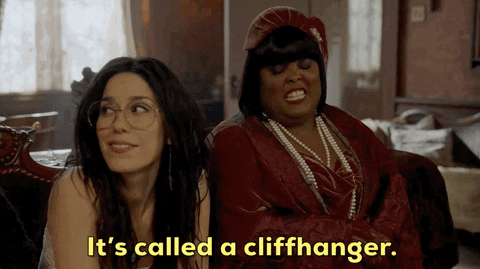
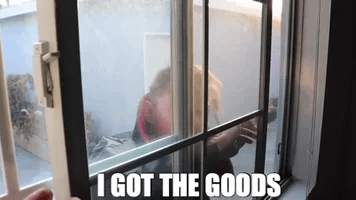
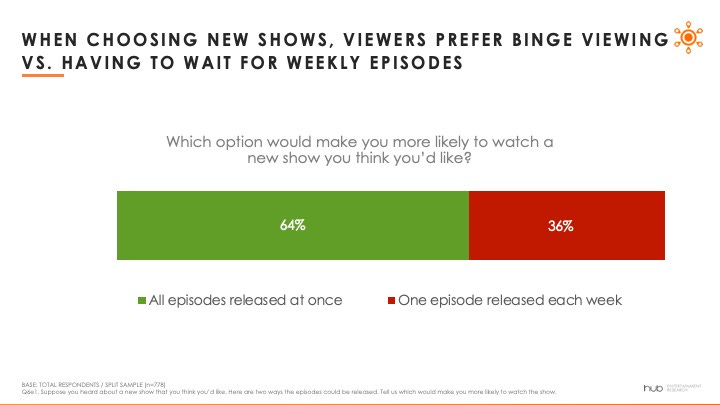
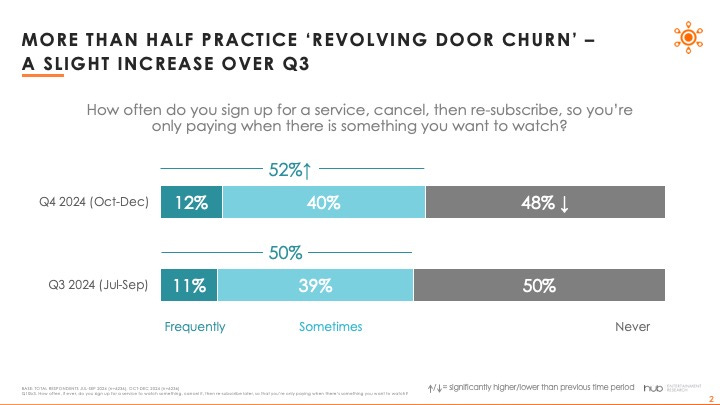
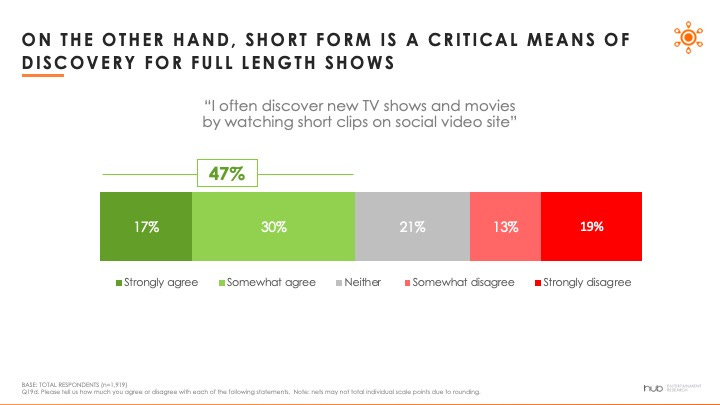
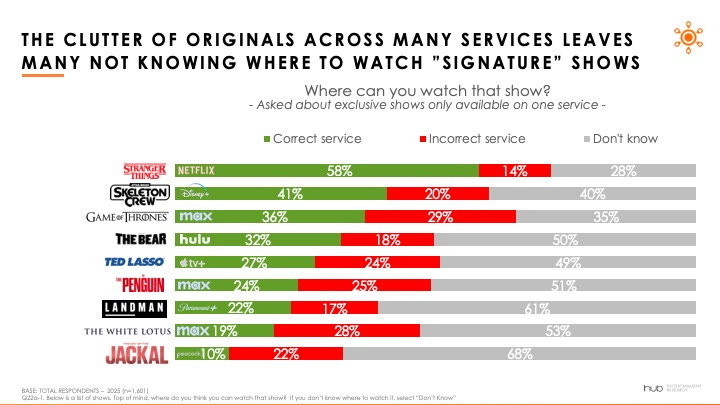
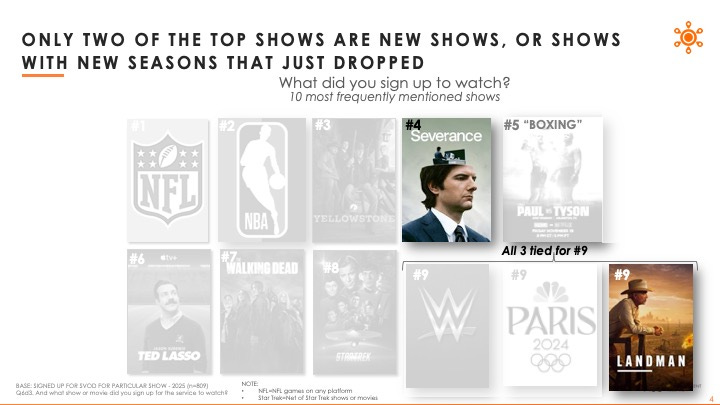
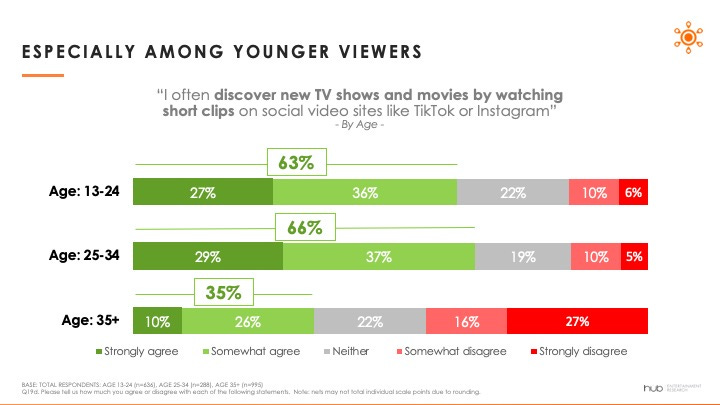
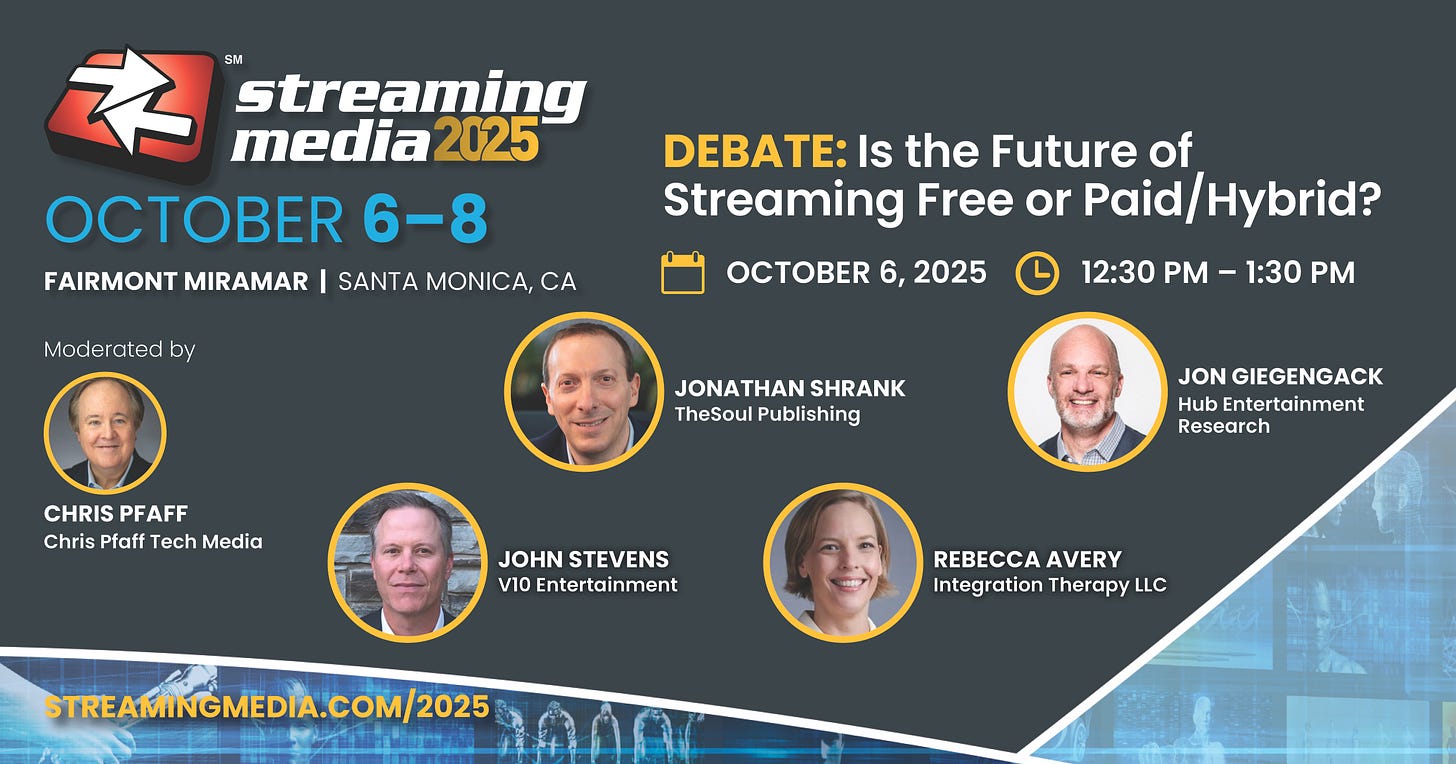
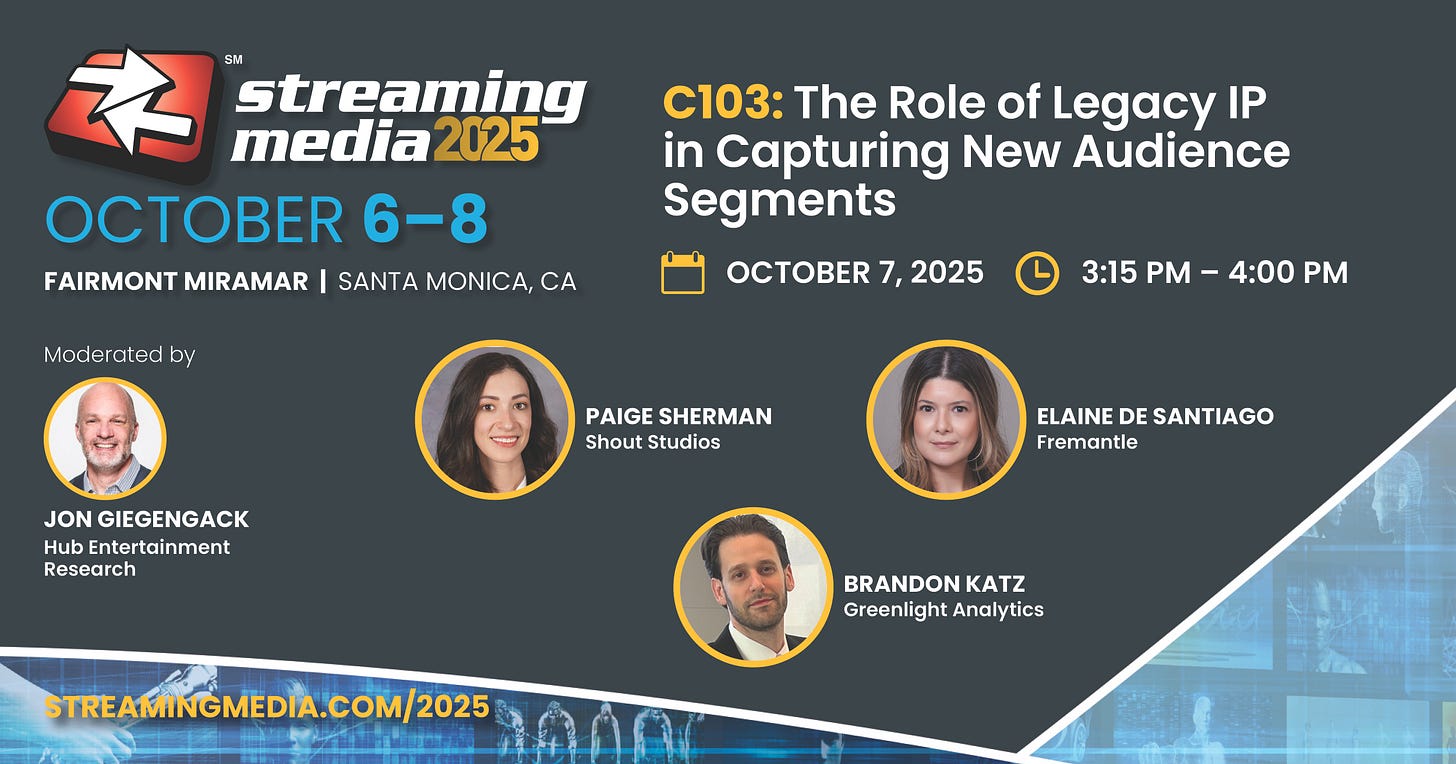
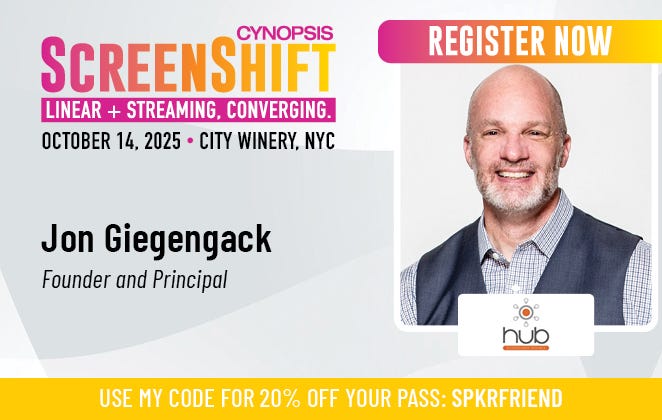
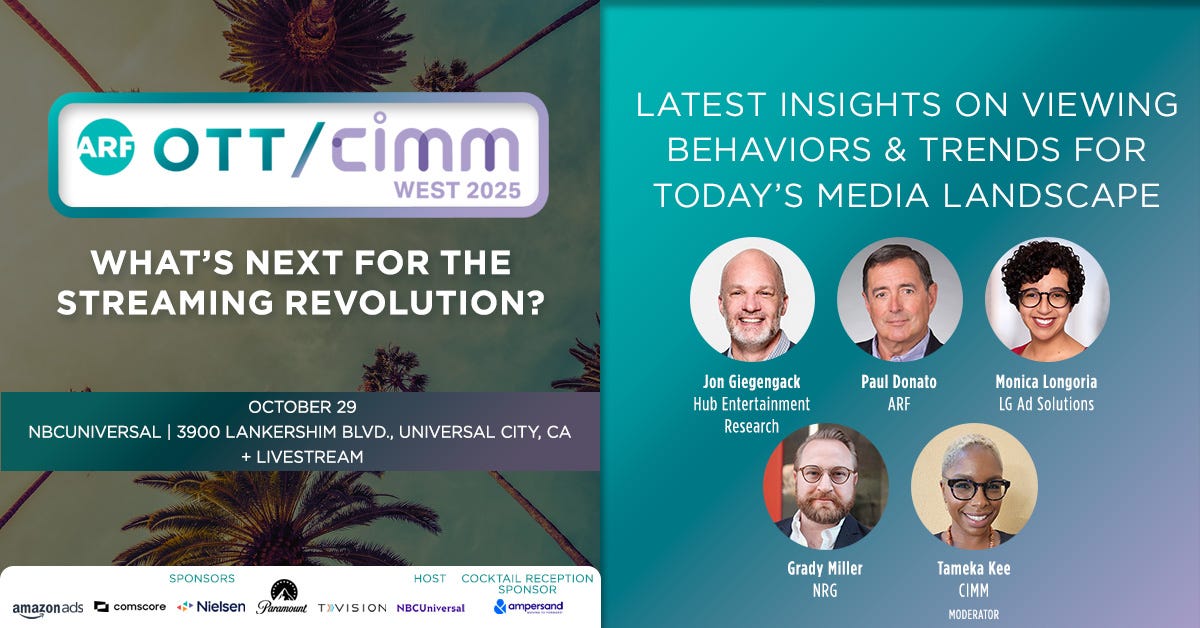
This was great analysis. I'm particularly intrigued by how I might think of interrupting my audience and raising the stakes so that they feel more compelled to come looking for my content.
Really insightful post! Am reminded of the last line of Gatsby: "And so we beat on, boats against the current, borne back ceaselessly into the past"